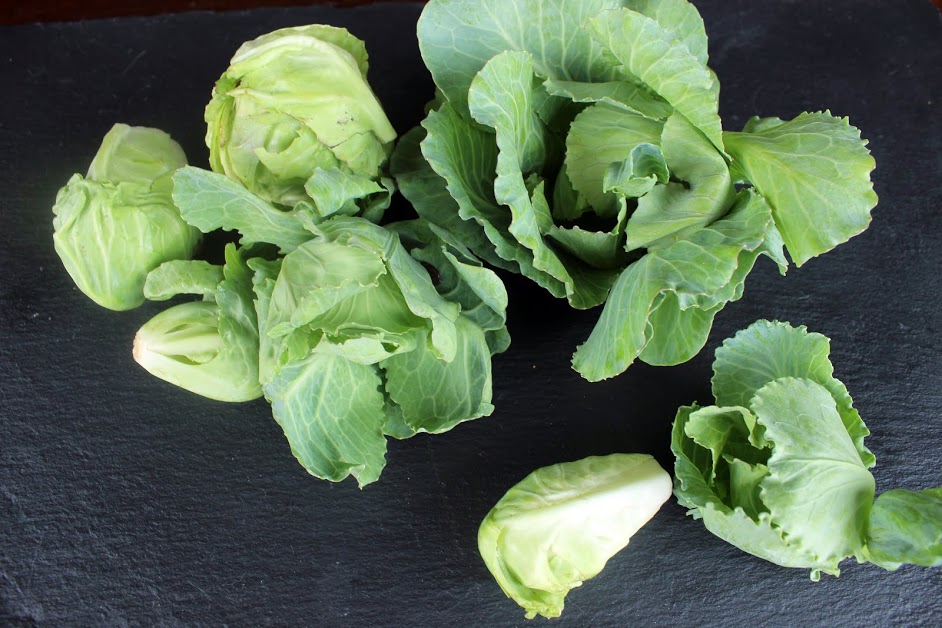Cabbage sprouts are the young seedlings that grow from cabbage seeds They have a distinct appearance that differs from mature cabbage heads Here is what to expect cabbage sprouts to look like at various growing stages,
Sprouting Stage
Cabbage sprouts begin as small seeds that are oval shaped and yellowish-brown in color. When the seeds first begin germinating, a tiny white root will emerge from the bottom of the seed. Next a small green stem pokes out from the top half of the seed.
Within 2-3 days of being planted, the seed coat will open up and two jagged seed leaves (cotyledons) will unfurl. These leaves are a lighter green color than mature cabbage foliage. The sprouts look like tiny green plants at this point, usually around 1⁄2 – 1 inch tall.
Seedling Stage
After the cotyledons emerge, cabbage sprouts enter the seedling stage. The first set of true leaves will develop next to the cotyledons. These new leaves are small, smooth, and rounded.
Cabbage seedlings reach around 2-4 inches in height when the first true leaves appear. The sprouts consist of two wide seed leaves at the base with 2-4 tiny, rounded green leaves above them on short stems.
Growth Stage
As the cabbage sprouts continue growing over the next few weeks, their appearance changes dramatically. More leaves emerge that gradually become larger, thicker, and ruffled around the edges.
The leaves are oval with delicate wrinkling and a blue-green tint. They grow alternately up the lengthening stem in a loose spiral pattern. The sprouts take on a more open, loose look at this stage.
When 6 weeks old, cabbage sprouts are around 5-7 inches tall. The stems and leaves thicken as the plants mature and may start to resemble miniature cabbages.
Maturation
Given enough time and care, cabbage sprouts will eventually form heads and mature into adult cabbages. The sprouts cease growing upward at this point and instead focus energy on developing a dense head.
As the head grows tighter, the leaves curl inward and pack together. A large, firm, round cabbage head develops where the loose sprout leaves were previously. The sprouts officially transform into full-sized, harvestable cabbages over a period of 10-13 weeks after planting.
Identifying Features
Cabbage sprouts can be distinguished from other vegetable sprouts by a few key features:
- Oval, wrinkled blue-green leaves
- Alternate leaf arrangement on stems
- Thick, ruffled foliage that folds loosely
- Distinct cabbage odor when crushed
- Develop rounded heads over time
Sprouts belonging to the Brassica family like kale and Brussels sprouts may look similar, but cabbage sprouts lack the tight buds associated with Brussels sprouts. Their foliage also has a more blue hue than kale sprouts.
Uses for Cabbage Sprouts
Cabbage sprouts offer the same versatility as mature cabbage heads. Their tender leaves can be:
- Eaten raw in salads and slaws
- Quickly sautéed or stir-fried
- Added to soups and stews
- Fermented into sauerkraut
- Juiced for healthy drinks
The mild cabbage flavor of sprouts pairs well with meats, dressings, and spices. Steam larger sprouts or cook them just until wilted to retain nutrients.
So now you know what to expect as your cabbage seeds transform from sprouts to full heads. Enjoy identifying the characteristic look of cabbage sprouts at every stage of growth!
Seed Starting Kohlrabi, Kale, Broccoli, Brussels Sprouts, Cabbages: Planting, Feeding, Transplanting
FAQ
What are the sprouts that look like cabbage?
Are cabbage sprouts edible?
Can you plant a sprouted cabbage?
Are sprouts baby cabbages?
- A Complete Guide to Caring for Yuki Cherry Blossom Shrub - January 23, 2025
- Identifying Red Hot Poker Seeds: What to Look For When Harvesting Torch Lily Pods - January 23, 2025
- A Complete Guide to Harvesting Evening Primrose Seeds - January 23, 2025

